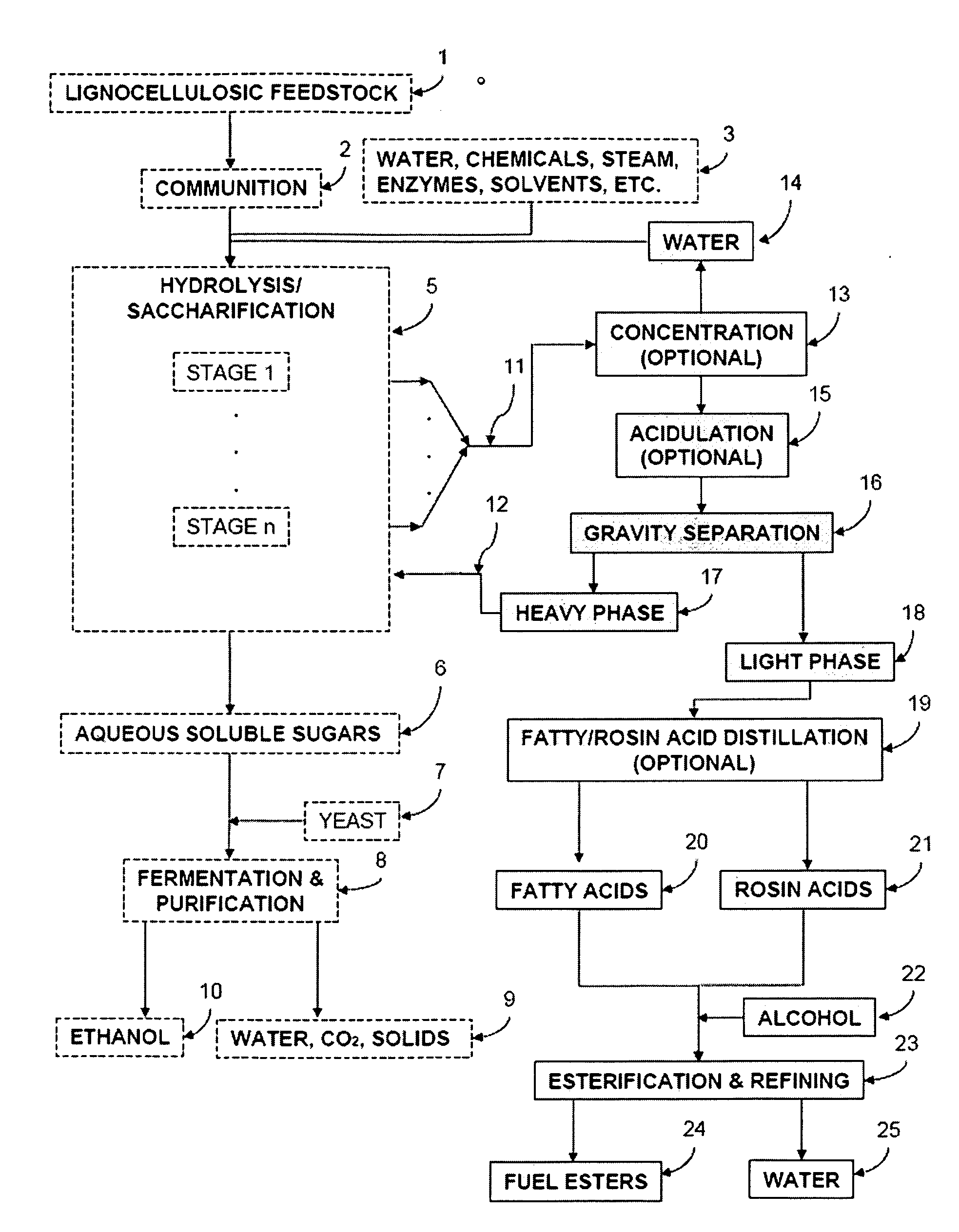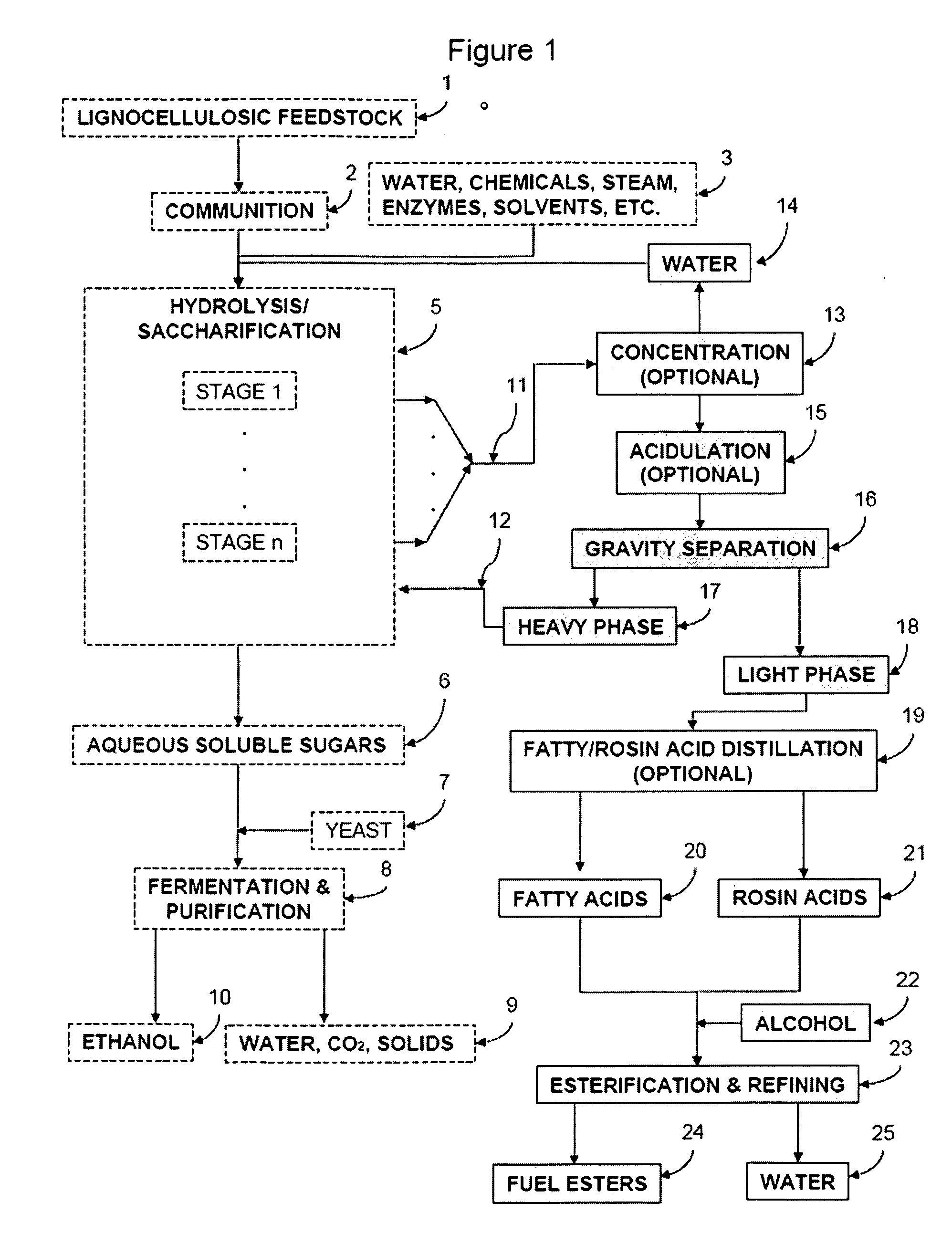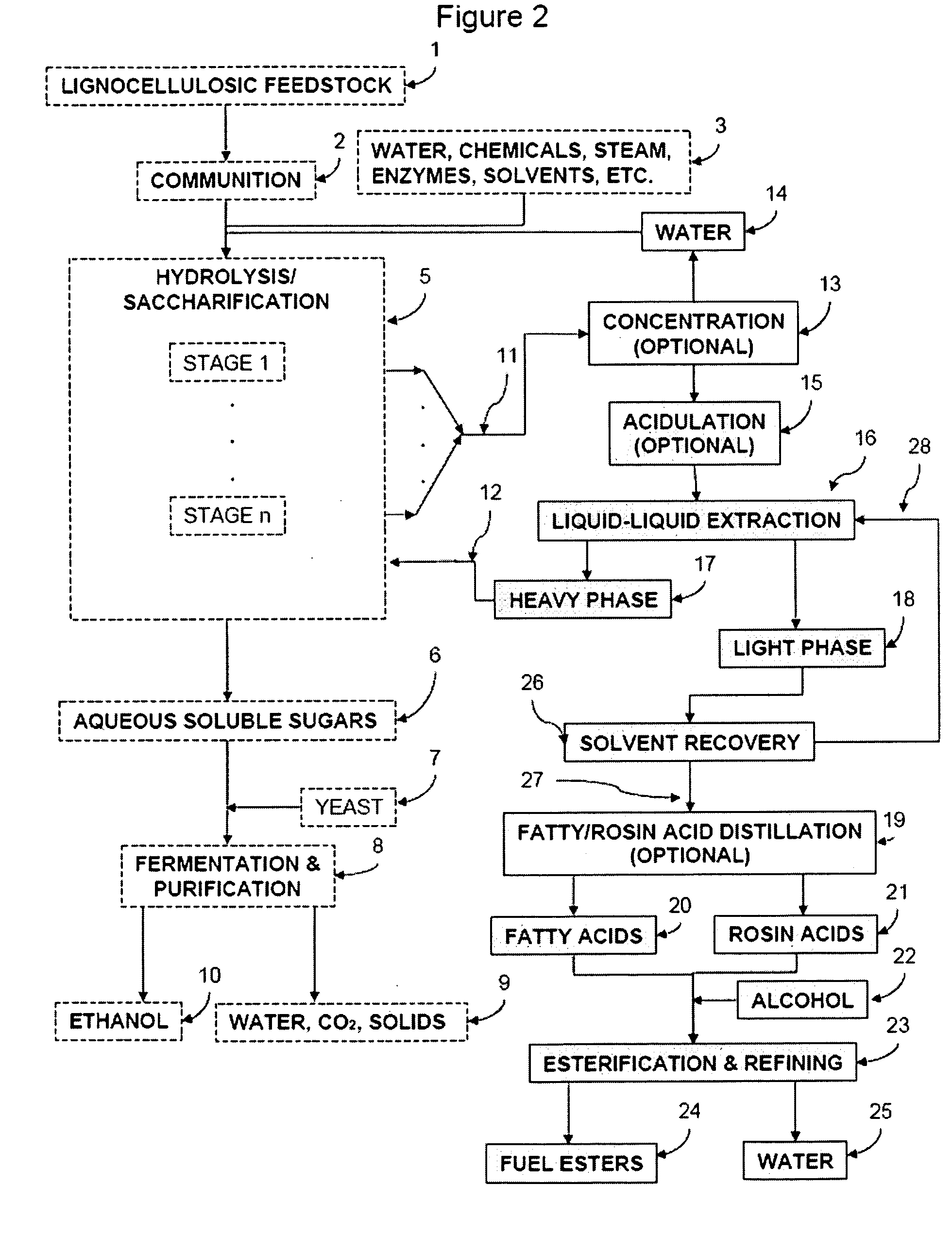Production of Ester-based Fuels Such As Biodiesel From Renewable Starting Materials
- Summary
- Abstract
- Description
- Claims
- Application Information
AI Technical Summary
Problems solved by technology
Method used
Image
Examples
examples
[0091]The following examples are for illustrative purposes only and are not meant to be limiting. Various embodiments of the invention wherein all components listed above may or may not be used are possible under the current invention.
[0092]A sequential block diagram of an embodiment of the invention where fatty and / or rosin acids are separated from pulping liquors via gravity separation is presented in FIG. 1. The steps which alone or in combination comprise embodiments of the current invention are shown with continuous line outlines and grey fills. Dashed line outlines with white fills indicate steps which can be accomplished via numerous methods that themselves are not specific embodiments of the invention but which, by specific embodiments of the invention will be improved upon due to production of liquid ester fuels in addition to ethanol.
[0093]Referring to FIG. 1, lignocellulosic material 1 sourced from agricultural crop and / or forestry operations is first subjected to some fo...
PUM
 Login to View More
Login to View More Abstract
Description
Claims
Application Information
 Login to View More
Login to View More - R&D
- Intellectual Property
- Life Sciences
- Materials
- Tech Scout
- Unparalleled Data Quality
- Higher Quality Content
- 60% Fewer Hallucinations
Browse by: Latest US Patents, China's latest patents, Technical Efficacy Thesaurus, Application Domain, Technology Topic, Popular Technical Reports.
© 2025 PatSnap. All rights reserved.Legal|Privacy policy|Modern Slavery Act Transparency Statement|Sitemap|About US| Contact US: help@patsnap.com



